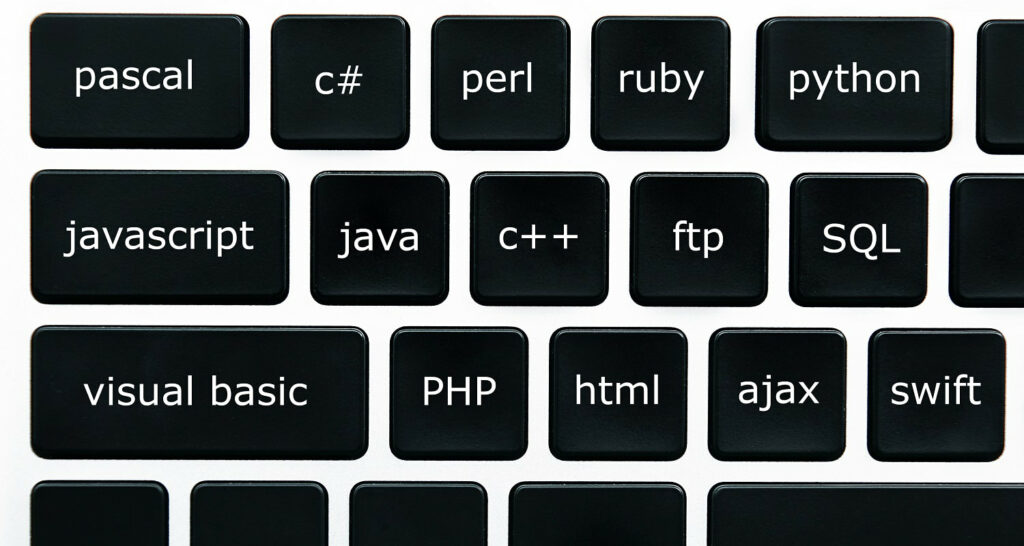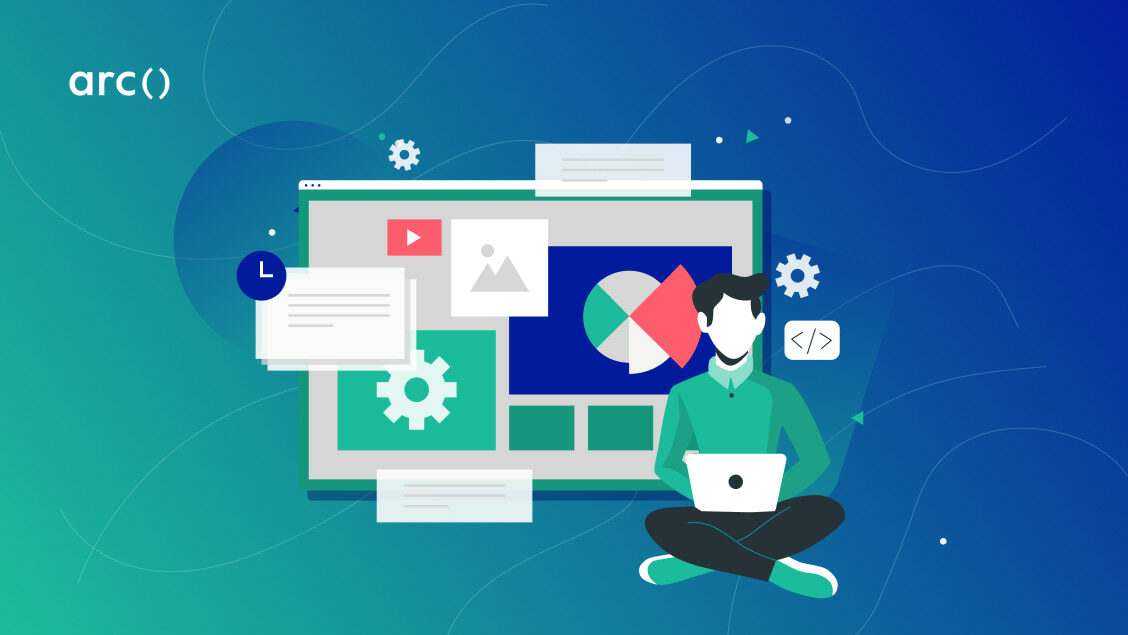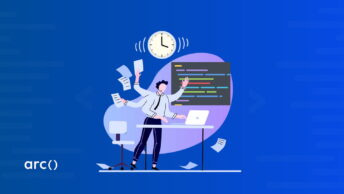The world of development is always expanding, and keeping up with the latest changes is only half the challenge. Knowing what you should be keeping up on is the other half of that problem!
If Tech Twitter, talking heads on YouTube, and the office scuttlebutt have got your head in a spin about what to focus your energies on, then never fear, we’ve broken out what we think are the main areas to focus on right now and what to look at in the future.
Everyone’s context is different and, where possible, we have added an indication as to who and why you would care about a particular technology, framework, or programming language.
Most In-Demand Programming Languages
English
We are starting this section with a potentially unexpected one. For better or worse the language of business is English and all of the main programming languages use English for their reserved vocabulary. The vast majority of the documentation and open source code available online is in English and nearly every large company’s codebase will be in English. While it is only the third most spoken language natively, clocking in at around 372 million native speakers compared to Spanish at 472 million and Mandarin at 929 billion, it is as a second language that English has spread around the world with a whopping 1.452 billion speakers.
There are of course many programming languages that don’t use English as their foundation, so if your English isn’t fantastic or you are helping someone get into tech who is still learning English, then don’t let them be put off from learning to code still! In fact, Eva from the Instagram account @jwicodes demonstrated on this episode of the All The Code Podcast that it’s possible to move to England from Spain and start a Python boot camp with no English at all and start a successful career as a data scientist!
JavaScript
As the web continues to grow and work its way into every aspect of our lives, JavaScript is still a massively dominant force because it’s basically the only coding language that runs in a web browser. Things like web assembly and some older technologies like VBScript add a slight caveat to this statement but, for all intents and purposes, everything running in a browser is made up of HTML/CSS and JavaScript. And it’s scope is only growing!
While Swift and Kotlin may be the native languages of iOS and Android respectively, technologies like React Native and Ionic allow apps written in JavaScript to run like native apps on a mobile device. In fact, nearly any simple web app can be wrapped with CapacitorJS and shipped as an app to an App Store within a matter of minutes!
According to Stack Overflow’s developer survey 2021, 69% of all respondents currently work with JavaScript with HTML/CSS coming up behind in second place at 56%. It’s also a well-paid programming language with 40% of respondents to the State of JS survey in 2021 earning more than $50,000 per year.
But does this mean the market is oversaturated? With so many developers learning it and working with it, is the market’s appetite for JavaScript developers waning? No, quite the opposite in fact! A quick search on any job listing site for JavaScript will yield tens of thousands of results. (To get ahead of the other candidates, study up with our list of JavaScript interview questions and answers!)
Read More: How to List Programming Languages on a Resume
SQL
Hot on the heels of JavaScript in the StackOverflow developer survey we find an old statesman of the technology world that, despite the onslaught from NoSQL technologies like MongoDB, is still one of the most commonly used programming languages today. In my opinion, SQL is the one technology you can learn and have a job for life as it has strong underlying principles, is used by pretty much every company in the world that has an IT infrastructure, and works no matter what tech stack is built on top of it. Migrating database technologies is also a terrifying and dangerous task so it’s a very sticky technology. Once installed and established it tends to become the foundational part of any and all future projects that the company makes.
Many people are scared of learning SQL and will instead opt to use an ORM to interact with their store instead. This is understandable as SQL can look intimidating, however, at a certain point, there is huge value in being able to understand how SQL queries are formed, what goes into creating an execution plan, why looping is rarely the answer, etc. SQL is also a declarative language and as the world moves more toward a declarative style with infra-as-code, React and SwiftUI, there is huge value in knowing how the concepts apply at the data storage level as well.
Python
Often described as the best beginner coding language, Python isn’t to be underestimated because it also scales to running core aspects of the largest search engine in the world! Python is an excellent coding language to know in 2022 and beyond. It’s really taking over the areas of data science, machine learning, and artificial intelligence thanks to excellent mathematical and data analysis libraries such as NumPy, Pandas, and SciPy and for web development many people consider Django to be the gold standard in backend frameworks.
Around 42% of respondents to the StackOverflow developer survey actively use Python and it ranks at number 6 in the “most loved” languages, comfortably above JavaScript which doesn’t even break to the top 10 of that list. Interestingly it is behind TypeScript which is number 3, perhaps types really are the answer to JavaScript developers’ woes.
If Python is on your long list and you feel like a move to data science or a broadening of your backend skills is in order then here’s a list of 5 ways to learn Python.
Read More: Common Interview Questions for Programming Jobs
C#
Microsoft’s in-house programming language might not get the press that the likes of Python or JavaScript do but, between .NET for cross-platform development and Unity for game development, there is very little that it can’t do. With Microsoft’s drive over the past few years to really become a developer-centric company and opening up Visual Studio to run on Mac, there are really very few limitations to this programming language. In fact with Blazor they even have in browser C# sorted now as well, we don’t think it will be taking over from JS any time soon but it’s a start!
Given the depth of the language and supporting ecosystem, there are also many .NET and C# dedicated resources and communities, from podcasts like Microsoft MVP Jamie Taylor’s The .NET Core show and the .NET Rocks! show, to blogs like The Morning Brew by Chris Alcock and Morning Dew by Alvin Ashcraft, and of course what list would be complete in 2022 without a Discord Community as well.
While it’s always a little risky to pin your career to a technology so fully driven by a single company, we think that Microsoft’s stewardship of C# and the surrounding ecosystem has been exemplary over the last 20 years and, unlike how many other large tech companies approach their platforms, is only showing signs of improving.
Best Programming Languages for the Future
The list of programming languages above has some popular entries, and those are not going anywhere and will provide a long and fulfilling career to any software developer. Beyond these, though, there are some up-and-coming computer programming languages that are worth putting time into should you want to be at the cutting edge or, in one case, go back to basics and speed up your workflow.
Rust
This programming language, heavily invested in by AWS, is a strongly typed language that aims to solve many of the problems found in the older crop of low-level languages such as C and C++. People who code in Rust absolutely love Rust, it’s topped the StackOverflow developer survey’s “most loved” list for 4 years in a row, including 2021!
That being said, for all the noise around Rust it is still very small and niche, while it may top the “most loved” list in that survey it’s only used by around 6% of developers who took the survey. The syntax is also quite intimidating for people who come from the land of JavaScript and Python, which may hamper adoption in those circles. The best getting started guide we have found online is this Rust Crash Course video from Brad Traversy which covers the basics in a couple of hours.
If you’re into low-level programming or considering working with AWS infrastructure maintenance, with a coding language that can be incredibly fast, with an opinionated way of doing things, then Rust could be worth your time.
Read More: How to Build a Software Engineer Portfolio (With Examples & Tips)
Solidity
No programming language list roundup of 2022 would be complete without a nod to blockchain/Web3 and this one is no different. There is much to dislike about the Web3 world in its current state, is a distributed, expensive slow compute really something the world needs? Who knows. What we do know though is that the immutability, transparency, and financial cost of anything that takes place “on-chain” lead to an interesting set of trade-offs for the main programming language of that world.
The Ethereum blockchain uses a language called Solidity for all its smart contracts (which is a fancy name for “on-chain executable code”) and salaries for those in the know are skyrocketing at the moment as every venture capitalist is pouring money into crypto companies faster than they did in the Web1.0 and Web2.0 phases of the internet.
This language may end up going nowhere. Certainly, there isn’t a big contingent working with it now, it doesn’t even make an appearance in the 2021 Stack Overflow developer survey. With other chains like Solana using Rust, C, and C++ as their on-chain language instead of something homegrown, we may see Solidity fizzle out. However, if a language where the size of the unsigned int you choose to declare can change the running cost of your app appeals to you, then the CryptoZombies tutorial is the place to head to.
Go
Go is not a particularly new programming language. Released in 2009, it aims to solve the problems that large teams have at large companies working on large problems, did we say large enough times for you to get the idea? The feature of goroutines puts true, out-of-the-box native concurrency in any developer’s hands and allows you to run concurrent jobs and avoid roadblocks. In a distributed asynchronous system this can feel like a superpower.
Go is one of Google’s longer surviving offerings and given it is used widely internally it’s a solid language to pick up. By all accounts, it’s also a very simple language for programming to learn with many devs reporting that a weekend is enough time to feel proficient.
Ruby
This might seem like an odd choice here but there is a very good reason for why Ruby makes the list of popular coding languages for the future, and it comes down to circumstance. Post COVID we are seeing a wave of resignations, job changes, career changes, and an unprecedented number of people striking out on their own to build a micro-SaaS, agency of one or become an IndieHacker. For those people, an opinionated tool that can get you up and running quickly and easily is very powerful and Ruby, when used with Ruby on Rails, is exactly that.
There are rough edges for sure, deployments can be a pain and there is a lot of older, out of date documentation out there but, if you want a tool that can scale from a single website to sell snowboards made by one person to the world’s leading provider of turnkey e-commerce websites in the form of Shopify, then it’s hard to argue that Ruby and Ruby on Rails is a bad choice. Sometimes the best way to cut through the noise of the latest and greatest is to find an old stalwart still faithfully serving its community and doing what it’s known to be good at.
If you want to learn Ruby then this course Ruby on Rails Tutorial | Learn Enough to Be Dangerous has been long held as excellent, with this ringing endorsement from one former student, AnnaB:
If you’re interested in Rails, then Michael Hartl’s Rails Tutorial is hands down the best tutorial I’ve ever encountered.
Read More: How to Become a Software Engineer: Education, Steps & Tips for Success
Most Popular Frameworks and Tech Stacks to Learn & Know
React
Facebook’s React still rules the roost when it comes to frontend web frameworks and it’s easy to see why. The schism caused by the transition from AngularJS to Angular 2+ still leaves a bad taste for many a frontend dev and, while there are issues, React is at least a consistent experience version to version with few surprises.
For all its current dominance, however, it has only just this year overtaken jQuery as the most used frontend framework. Given that jQuery came out with version 3.6.0 in March 2021 and is 15 years old, it is clear that a technology many of us consider to be legacy is still very much alive and kicking, and it has taken this long for React to unseat it.
VueJS
It is always dangerous to assume that any market is sewn up and that nothing new can break through. The rise of Vue in the front-end JS world exemplifies this. In a world where winner takes all is so common it’s encouraging to see something new come to the fore. With nearly 20% of JS developers claiming to have worked with it now, this is certainly the case here. VueJS wants to live in the middle ground between the rigid and highly opinionated world of Angular and the free-flowing, anything goes land of React.
Unlike React there are clearly defined ways to do most things, but without the heavy-handed nature that Angular brings with it. It also comes with a CLI, like Angular and NestJS, which saves time when scaffolding things out and helps keep project structure consistent. This reduces the codebase whiplash often experienced when moving from one React project to another that somehow bears no resemblance in structure or style to each other.
Read More: Do you need a degree to become a software engineer?
AWS
Amazon Web Services takes over 50% share of the cloud infrastructure market. With GCP and Azure fighting it out for the remainder along with some distant competitors like Linode, Heroku, and Digital Ocean. We aren’t in a uni-cloud world but having AWS on your resume is becoming a near requirement at this stage.
Learning the basics of AWS’s fundamental building blocks such as API Gateway, DynamoDB, Lamba, Route53 and SAM/Cloud Formation is enough to know your way around the system and everything else can be learned on the fly as needed. While Amazon has struggled to build a consistent story around their more turnkey, batteries included offerings, their lego brick style offerings are widely used in this rush to the cloud, and Cloud Engineer (a term that is very hard to define anyway) is one of the most in-demand skills in the early 2020’s job market.
If you’re looking for an entry into this world then Open Up The Cloud is a highly recommended starting point.
LAMP
At the risk of making this too web dev-focused, it is clear that PHP is still the lingua franca of the web’s backend and thanks to the popularity of WordPress it’s going to be a long time before this changes. As a result the Linux, Apache, MySQL, and PHP stack of old still looms large in the current web dev space whether you choose to pay attention to it or not. While DevOps, containerization, and alternative SQL database technologies may change some specifics, this is still fundamental, and learning it can provide gainful employment for years to come even as a backup in harder times.
Read More: How to Manage Distractions When Working From Home (7 Top Tips)

Top Tech Stacks and Frameworks for the Future
Server-Side Rendered JS
One of the hot new, but in reality quite old, trends in the web dev world is using server-side rendered sites … again. But this time with JavaScript and React instead of PHP/Ruby etc.
NextJS is leading the charge here and the approach is interesting, to say the least. You can use it to produce a purely statically rendered site so it can live at the edge and be blazing fast, you can incorporate some server-side rendered aspects where needed and throw in some API endpoints that will get hosted as cloud functions, all from a simple deployment pipeline through Vercel’s hosting platform. This project is in active development and evolving regularly but for those who want a serverless frontend experience with the safety of some backend cloud functions, this is a great option. If you need more guidance on implementing this technology, you might consider serverless consulting to ensure you’re making the most of this approach for your project.
RemixJS is also a new entrant here, claiming to be building on web fundamentals only, and embracing standards like fetch and form submit actions. It is harking back to the old days of web development before the Single Page App took center stage and totally separated the backend from the frontend. Still in its infancy and only recently out of a paid semi-stealth mode, the verdict is still out on this technology, but it’s making some noise that shouldn’t be ignored.
While neither of these is the silver bullet to the complaints that exist in the JS world, it is interesting to see well-established figures in the web dev sector go full circle to older approaches with a new take on them, in one case they are quite literally Re-Mixing what we did in the old days. We will see innovation in this area for years to come, much of it driven by the move to serverless cloud infrastructure enabling new ways to host and deploy web apps.
SwiftUI
While the Mac has never owned a large market share of the computing world, its smaller counterparts of the iPhone and iPad have been driving mobile innovation forwards for years. With the iPhone claiming nearly 25% market share of the smartphone world and the iPad a whopping 38%, it’s no surprise that Apple has been criticized for letting the Mac wane for the last few years.
With the release of the M series of Apple Silicon ARM-based chips, however, and a complete transition of the Mac hardware line moving off of Intel, this has started to change and, to accompany this, Apple has their new cross-platform declarative framework: SwiftUI. The aim is to slowly, and given this is Apple you can rest assured it will be very slow, replace the existing UIKit and AppKit frameworks for iOS and macOS development and have a single framework that scales from WatchOS, through iOS and iPadOS to MacOS. Want to navigate through macOS smoothly? Explore the latest MacOS System Extension.
This is a tall order for any single technology but it’s possible Apple has seen the damage done to its native Mac app ecosystem by Electron and the inability to share code from their popular iOS-based platforms onto their desktop solutions and wish to address that.
Either way, if you’ve been looking for a reason to dive into iOS development, then hitching your wagon to the SwiftUI train while it’s still relatively early could provide a fun ride, and as always Paul Hudson comes to the rescue with an excellent introduction with 100 Days of SwiftUI.
Read More: Software Developer vs Engineer vs Programmer
.NET Maui
Going from one cross-platform solution to another we come to Microsoft’s .NET MAUI framework which is an acronym for Multi-platform App UI and allows a single codebase to deploy natively to iOS, Android, macOS, and Windows. If we thought SwiftUI was aiming high then it’s clear that Microsoft is setting its sights even higher, and it’s hard to not see this as taking a direct shot at JavaScript’s progressive web app/electron app sector as well.
Under the hood this is achieved by compiling C# code into various different flavors of intermediate just-in-time compiled native assembly, ahead of time compilation into ARM machine code, leveraging Mac Catalyst, and compiling to a native windows app. Microsoft is clearly investing a lot of time and effort into this initiative and solving many problems that they felt Xamarin was incapable of scaling to longer term.
If you want to jump aboard this cross-platform train and leave behind the woes of JavaScript then this could be just the ticket you’ve been looking for.
Serverless and/or Terraform
For the next decade, the rush to the cloud is not going to abate and as a result, there is much work to do in reshaping and refocusing how we work with and build the future of the web. The three public cloud providers each have their own way of doing things and opinions on what work they should do for you, and what work you need to do yourself – looking at you Azure, not providing a network interface by default on a virtual machine. While we are a long way off the utopia of one declarative language to rule them all, it is possible to get close.
Serverless and Terraform (really Hashicorp) both have their own way of helping you declare the infrastructure you want in code so you can quickly and repeatedly deploy the same environment in, theoretically, a cloud-agnostic way. Learning how these work and being able to build out a modern serverless web application is an excellent way to future-proof your employability for many, many years. While these specific tools and companies will not remain static, the methodologies and practices they are laying out will form the foundation we build upon in this area for the foreseeable future.
Cloud is still early, there are a lot of rough edges to iron out and things are evolving rapidly, so diving in now will not only give you a strong set of skills but also give you the opportunity to steer how this area develops.
Read More: When Can You Stop Calling Yourself a “Junior” Software Developer?
Wrapping Up
Technology is constantly changing and there is no real way to predict what the future looks like, arming yourself with a mix of currently in-demand skills and dipping your toes in the water of up-and-coming technologies are tried and true ways to stay relevant and up to date.
Remember that you don’t need to get in on the ground level on the emerging technology front. You can wait until something feels semi-mainstream before taking the plunge and you won’t have missed the boat. In fact, we think it’s clear from jQuery’s continued dominance that there is never really a way to miss the boat in this sector.











